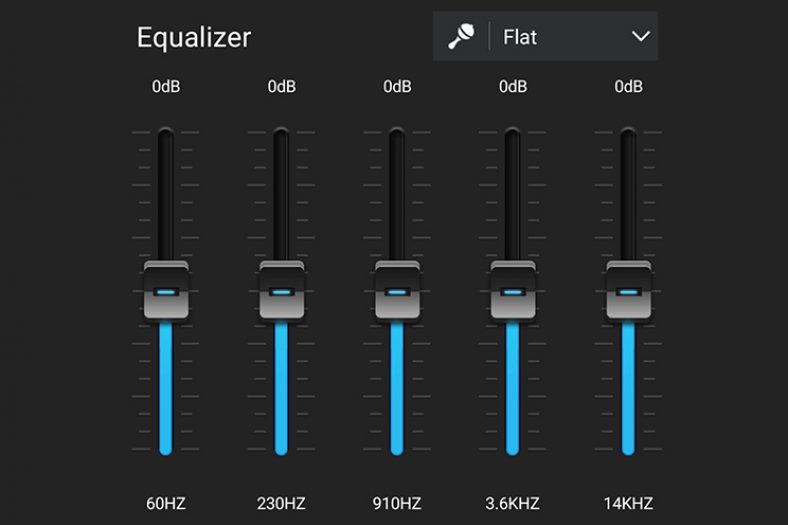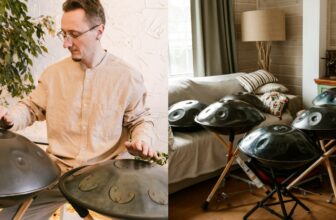The Best Equalizer Settings For Music (The Real Answer)

The best equalizer setting is one that is turned off or one that is set to “flat”, meaning that all dials are set to zero. Equalizers distort the sound of the original master recording. However, they can be useful as a last-resort when compensating for poor speakers or headphones.
Please note, we’re referring to the use of equalizers in the context of listening to music. Conversely, Equalizers are an essential tool when it comes to producing, mixing, and mastering music.
If you are a music enthusiast who is looking for the best sound when listening to music, you may have found yourself playing with the equalizer settings at some point. Taking control of your audio by cutting the frequency ranges you do not want to hear and boosting the ranges you want to hear more sounds quite perfect for music lovers.
When audio engineers mix a song, they produce them to sound good on any kind of device to any kind of listener in any kind of setting. As every listener has different tastes, you may find some songs to be relatively weak on some frequencies or too bright on others.
If you really want to tweak the EQ when listening to music, it may be better to play just slightly with the equalizer settings without distorting the sound too much. Read on to learn how to make the best with your equalizer.
Contents
What Is The Perfect Equalizer Setting?
Well, the best equalizer setting is the one that does not change anything. So, a flat equalizer, meaning that all dials are set to zero, or a turned-off equalizer provides the highest quality sound.
This is because playing with the equalizer distorts the sound and what you listen to becomes something different than the music was originally intended to sound like. Music releases are generally put through a comprehensive mastering process where a mastering engineer tweaks and gets the sound right before releasing the track. Altering the EQ for tracks will likely make them sound worse unless you have very good reason to do so (for example, altering the sound to compensate for a very bad speaker system).
This issue becomes more apparent with low-quality headphones and speakers as they can not handle all the frequency ranges successfully, leading to muffled, cracked, or distorted sound.
But that does not mean an equalizer is unnecessary. Some sound systems and rooms have peaks and dips, coloring and changing the sound. An equalizer can help you avoid these issues. However, the adjustments should always be small.
If your speakers or headphones sound poor with a flat equalizer, you may play with the dials a little to achieve a non-disturbing sound. For example, you can reduce the bass in a boomy car radio or reduce the high-end frequencies on damaged earphones to avoid hiss sounds.
High-quality speakers and headphones generally sound great even without an equalizer. But, you may play with the frequency bands just a little bit to emphasize the ranges that the genre you are listening to requires.
In this sense, the perfect equalizer setting is ideally the flat one. However, there can be minor adjustments depending on the room, the sound system, and the genre.
What Is An Equalizer?
In order to find the perfect equalizer settings, you need to understand what an equalizer is and how it works in the first place. An equalizer is a processor which adjusts different audio frequencies, emphasizing some over others. It boosts or reduces specific frequency ranges to balance and clear the sound.
You can find equalizers in many sound systems, from your home theater setup to your amp or car radio. It is one of the crucial elements for audio engineers as it is a fundamental process when recording.
Frequency Ranges
Every audio file consists of different frequency ranges. These frequencies can be examined in three different categories: The low-frequency range, which is the bass; the mid-range, which is the range of human voices; and finally, the high-frequency range, which is the treble. For example, to get more bass in a song, you can increase the low-end frequencies on your equalizer.
Human ears can detect frequencies between 20 Hz and 20 000 Hz. So this band is the basis of the equalizers. As mentioned before, all of the frequencies between these limits have different energy and feeling for humans.
To get to the ideal EQ settings, you need to know more about frequency ranges and their functions.
20 Hz: This is the so-called deep bass region. It is the lowest frequency humans can detect, so it is the lowest frequency on an equalizer. Kick drums and sub-bass instruments use this frequency range, but you will need a good subwoofer to hear it clearly.
50 Hz: The lower bass region starts with this point. The bass and kick drums use this band, and you can hear this range clearly with regular speakers and earphones.
100 Hz: With the 100 Hz point begins the mid-bass region. This is the range of drums and most of the bass instruments.
200 Hz: The upper bass region, starting from 200 Hz, is where the “woofing” sound of bass and drums fall on. Also, the bass sounds of most of the instruments like pianos, guitars are present here.
500 Hz: This is the point where the lower midrange starts. It is the region of lower-end notes of vocals, guitars, pianos, and most instruments.
1000 Hz: The middle midrange is the typical region of most instruments like snare drums, guitars, pianos, violins, etc.
2000 Hz: The upper mid-range is the region of most instruments and vocals. The notes on the mid to higher range of your instruments are present here.
3000 Hz: This is the presence range. It is home to the higher notes of guitars and violins. It can be pretty entertaining to listen to a well-made song in this frequency, but it can be very annoying if poorly made.
5000 Hz: This is where the high-end frequencies begin. It is the treble region. The cymbals and the higher ranges of pianos synths are in this range.
10 000 – 20 000 Hz: The extremely high-end range is the higher limit of human ears.
The optimal equalizer should be flat in this way; the original recording can be listened to without alterations. But, there are some occasions that minor tweaks can be necessary. Some different genres can sound better when specific ranges are emphasized.
Equalizer Settings for Pop
For pop music emphasizing the mid-range frequencies can be good as the crucial elements of the genre are the vocals.
Equalizer Settings for Bass
Many people enjoy hearing woofing bass when listening to music. To get a more dominant bass, you can increase the lower ranges on your equalizer.
Equalizer Settings for Voice
Just like the adjustments with pop, to get more clarity on voice in the music, you can emphasize the mid-ranges slightly.
Equalizer Settings for Electronic Music
The bass is the fundamental element of electronic music. So you can slightly increase the lower-ends. Also, increasing higher-ends is a good idea as the digital sounds used in the genre are mostly in that range.
Equalizer Settings for Piano Music
Classic and piano music generally use a wide range of frequencies. So slightly boosting the lower ends of all the different bands can make it sound better.
Equalizer Settings for Rock Music
Rock music uses all of the frequency ranges quite efficiently. With kick drums and bass guitars along with the higher-end notes of electric guitars, it touches almost every band. You can try slightly boosting every dial except the mid-ranges.
Conclusion
In short, as equalizers distort the sound, the best equalizer is a turned-off or a flat one. However, you may use minor adjustments on the dials to compensate for a low-quality sound system or a particular room. But as mentioned before, the adjustments should be as small as possible.





